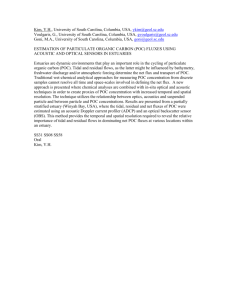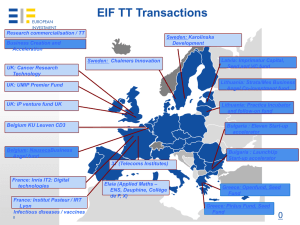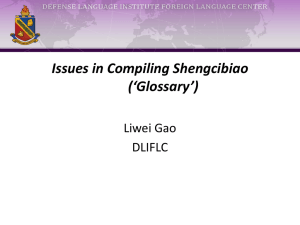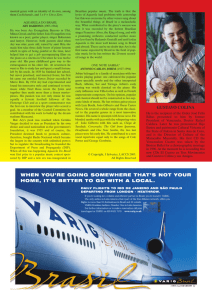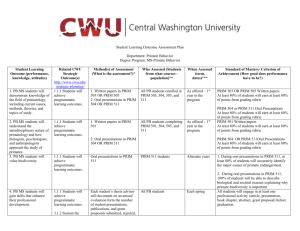Insights on the link between surface productivity and benthic
advertisement
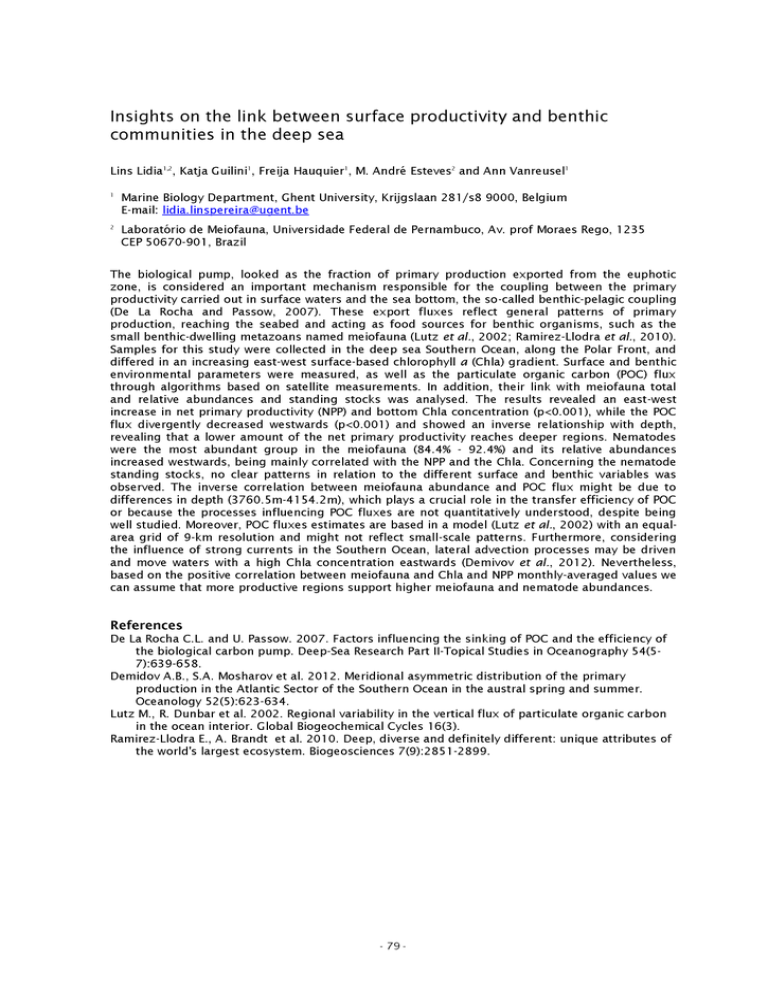
Insights on the link between surface pro ductivity and benthic co m m unities in the deep sea Lins Lidia12, Katja G u ilin i1, Freija H auquier1, M. André Esteves2 and Ann Vanreusel1 1 Marine Biology Departm ent, Ghent University, Krijgslaan 2 8 1 /s8 9000, Belgium E-mail: lidia.linspereira@ uqent.be 2 Laboratorio de Meiofauna, Universidade Federal de Pernambuco, Av. p ro f Moraes Rego, 1235 CEP 50670-901, Brazil The biological pum p, looked as the fraction o f prim ary production exported from the euphotic zone, is considered an im p o rta n t m echanism responsible fo r the coupling between the prim ary p ro d u ctivity carried o ut in surface waters and the sea bottom , the so-called benthic-pelagic coupling (De La Rocha and Passow, 2007). These e xp o rt flu xes reflect general patterns o f prim ary production, reaching the seabed and acting as food sources fo r benthic organism s, such as the small benthic-dw elling metazoans named m eiofauna (Lutz eta!., 2002; Ramirez-Llodra et a i, 2010). Samples fo r th is study were collected in the deep sea Southern Ocean, along the Polar Front, and differed in an increasing east-west surface-based ch lorophyll a (Chia) gradient. Surface and benthic environm ental param eters were measured, as well as the particulate organic carbon (POC) flu x th ro ug h alg orith m s based on satellite m easurements. In addition, th e ir link w ith m eiofauna to ta l and relative abundances and standing stocks was analysed. The results revealed an east-west increase in net prim ary p ro d u ctivity (NPP) and b ottom Chia concentration (p<0.001), w hile the POC flu x d ive rg e ntly decreased westwards (p<0.001) and showed an inverse relationship w ith depth, revealing th a t a lower am ount o f the net prim ary p ro d u c tiv ity reaches deeper regions. Nematodes were the m ost abundant group in the m eiofauna (84.4% - 92.4%) and its relative abundances increased westwards, being m ainly correlated w ith the NPP and the Chia. C oncerning the nematode standing stocks, no clear patterns in relation to the d iffe re n t surface and benthic variables was observed. The inverse correlation between m eiofauna abundance and POC flu x m ig h t be due to differences in depth (3760.5m -41 54.2m), which plays a crucial role in the tra n sfe r efficiency o f POC or because the processes influencing POC fluxes are not q u a ntita tive ly understood, despite being well studied. Moreover, POC flu xes estim ates are based in a m odel (Lutz ex a!., 2002) w ith an equalarea grid o f 9-km resolution and m ig ht not reflect small-scale patterns. Furtherm ore, considering the influence o f strong currents in the Southern Ocean, lateral advection processes may be driven and move waters w ith a high Chia concentration eastwards (Dem ivov ex a!., 2012). Nevertheless, based on the positive correlation between m eiofauna and Chia and NPP m onthly-averaged values we can assume th a t more productive regions su pp ort higher m eiofauna and nem atode abundances. References De La Rocha C.L. and U. Passow. 2007. Factors influencing the sinking o f POC and the efficiency o f the biological carbon pum p. Deep-Sea Research Part ll-Topical Studies in O ceanography 54(57):639-658. Dem idov A.B., S.A. M osharov et al. 2012. M eridional asym m etric d is trib u tio n o f the prim ary production in the A tla n tic Sector o f the Southern Ocean in the austral spring and summer. Oceanology 52(5):623-634. Lutz M., R. Dunbar et al. 2002. Regional va ria b ility in the vertical flu x o f particulate organic carbon in the ocean interior. Global Biogeochemical Cycles 16(3). Ramirez-Llodra E., A. Brandt et al. 2010. Deep, diverse and d e fin ite ly d iffe re n t: unique a ttrib utes o f the w orld's largest ecosystem. Biogeosciences 7 (9 ):2 8 5 1-2899. - 79-


